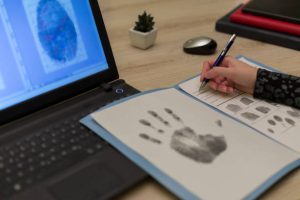Two people watch the same video, but they hear different things. One claims the tape is doctored; the other swears it’s clean as a whistle. Here’s where Audio & Video Forensics steps in. Think of it as CSI—except instead of fingerprints, investigators deal in wavelengths and pixels.

Picture this: You’ve got a scratchy old phone recording. Voices overlap and the background hums. Somewhere in there, maybe, the crucial confession. Analysts crank up the gain, filter out static, and zoom in on the quiet moments. Suddenly, something in the mix stands out. Was it whispered, or just a hiss from electrical interference? Forensic audio experts don’t just depend on their ears. Sophisticated software breaks spoken words apart, dives into frequencies, and matches patterns.
Video forensics gets its hands dirty in much the same way. Let’s say a piece of CCTV footage has found its way into a courtroom. Shadows shift, pixels jitter, and faces blur. Can you really spot the details that matter? Enhancing footage isn’t about turning a potato into IMAX. It’s about uncovering clues without making things up. Is that a gun in his hand, or just keys reflecting the glare? Is the time-stamp accurate, or was the footage altered?
Sometimes, audio and video forensics don’t look for what is there, but what’s missing. Imagine an interview where there’s an odd click every five seconds. Gaps in the timeline. Maybe somebody’s trimmed out incriminating parts, hoping nobody’s the wiser. Guess what? Software can often pick up these gaps. Frame rates and bit rates become breadcrumbs. It’s a digital Hansel and Gretel story, and every crumb helps piece together the truth.
Diving into this field is not for the faint-hearted. Both tech and tactics change fast. Deepfakes—those artificially generated video files that swap people’s faces or voices—have tossed a wild card into the mix. Blink and you’ll miss their fingerprints. Audio fakes use neural networks to produce speech practically indistinguishable from the genuine deal. Now, forensic analysts need to stay on their toes. They investigate inconsistencies at a granular level, comparing how lips move vs the flow of speech, or looking for unusual artifacts created by machine learning.
Ever tried to transcribe a conversation with background noise? Forensic folks do this daily but with legal repercussions on the line. They might utilize techniques like adaptive filtering, which strips out background cacophony, or spectral subtraction, which literally subtracts noise from the aural landscape. Meanwhile, they log every adjustment, in case they get summoned to court. Suddenly that “enhancement” becomes the start of cross-examination: “Did you alter the evidence, sir?”
Take a rewind through history and you’ll see cases won and lost by the power of forensic analysis. From capturing identity thieves with edited voicemails to figuring out license plate numbers from shaky dashcam films, the proof is frequently as priceless as gold dust. The methods continue to grow increasingly innovative. Experts often cross-compare sources—say, two phone clips from the same incident filmed at different angles—and synchronize them to identify minute variations.
And, of course, sometimes the job is less about whiz-bang tech and more about good old-fashioned skepticism. Is it plausible that a three-second break in a police interview really happened by accident, or is there reason to investigate deeper? Did a phone “accidentally” run out of battery at a vital moment? Forensic experts probe clean stories, ask the uncomfortable questions, and occasionally find the source of a digital fraud operation.
Thus, next time someone says, “The tape don’t lie”—perhaps you should not believe them right yet. Audio and video forensics is here to keep everyone on their toes, drag the truth out by the scuffs, and verify the integrity of our computers. In a time where seeing isn’t always believing, it’s about learning what individuals aren’t sharing—and occasionally, what the machines are.